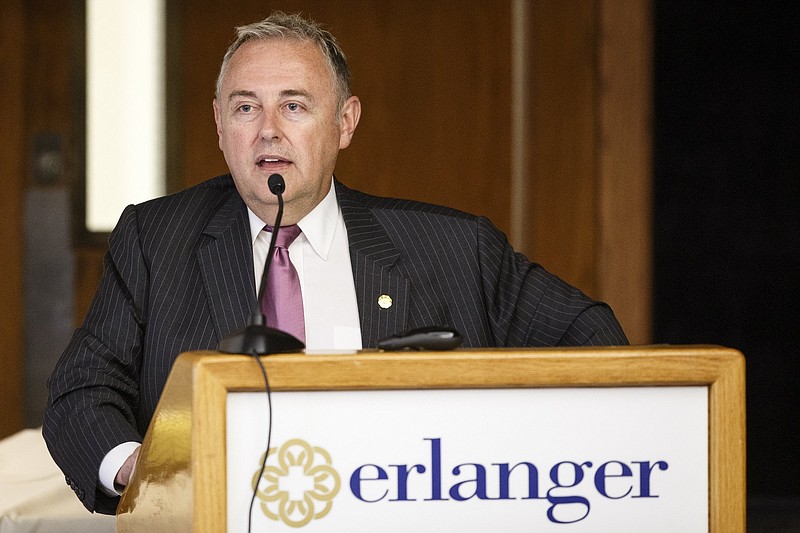Erlanger Health System sits nearly $19.5 million in the black halfway through fiscal year 2021, continuing the hospital's recent trend of outperforming its budget despite the COVID-19 pandemic.
Erlanger ended its second quarter, which ran from Oct. 1 to Dec. 31, 2020, with a $6.9 million net income from operations, compared to a budgeted net loss of $4.8 million and prior year net loss of $5.4 million during the same period. The second quarter results were made public Monday during the board's budget and finance committee meeting.
Britt Tabor, Erlanger's chief financial officer, said although overall admissions were down - 13.2% less than budget and 17.9% less than prior year - the number of patients seeking outpatient care is exceeding budget. Some of that includes outpatient elective procedures, such as joint replacements, which are profitable for health systems.
More patients with private insurance health insurance - which pays providers more than Medicare and Medicaid - sought care at the health system, which gave revenue an additional boost, he said.
On the other hand, emergency department visits remain low. Erlanger officials said the phenomenon is occurring around the country as a result of the pandemic and people staying home more. Monday's report showed emergency helicopter trips were down 13.7% over the prior year and emergency room visits were down 31.1% over the prior year at this time.
In addition to outpatient procedures, Tabor said better expense management is a primary factor behind Erlanger's performance. Erlanger spent $7 million less than budgeted for salaries and benefits during the quarter.
"Wages and some of the other non-salary items got out of control when we were previously growing so fast," he said in an interview. "We've been able to control costs and manage under a pandemic. I think that's really the key, and we're very proud of it."
Year-to-date, Erlanger has spent about $10.4 million on direct COVID-19 expenses, he said. So far this year, Erlanger has added around $14 million worth of federal relief funds meant to offset the COVID-19 pandemic to its revenue. The health system has about $13 million worth of federal relief funds meant to offset the cost of the pandemic remaining, and Tabor said Erlanger will likely use about $2 million of those funds each month for the rest of the fiscal year, which ends June 30.
Although Erlanger's amount of premium and overtime pay was high, CEO Will Jackson said that many other hospitals in the country resorted to bringing in travel nurses to help relieve staffing shortages during the pandemic.
"We've tried to look with a philosophy of maintaining premium pay and autonomy for staffing decisions to our nurses so that we don't have to bring in an agency," Jackson said, noting that there are some advantages to using outside nurses.
"They have a place and we have used them previously, but it's been a long time," he said. "All in all, I think our nurses have been incredibly resilient, as they always are."
Although the pandemic continues to pose a threat to Erlanger's bottom line, Tabor said Erlanger is a different organization now than it was this time last year.
"I think that we're leaner, we're more efficient, we're more productive, and we're going to continue that," he said. "Those don't stop with COVID."
Contact Elizabeth Fite at efite@timesfreepress.com or follow her on Twitter @ecfite.
